Sprinkled Like Paprika, The Thermal Waters of Hungary
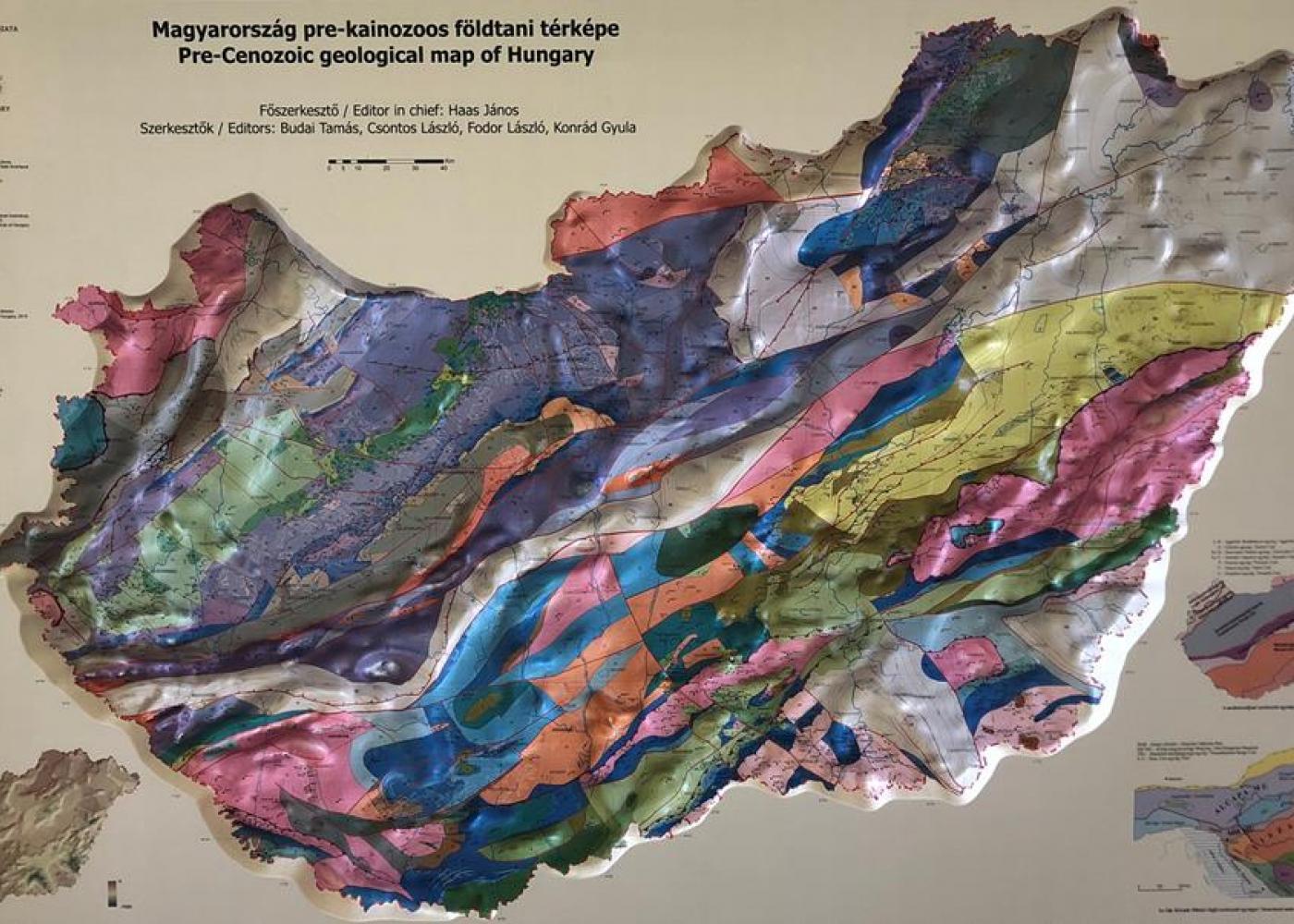
The moment of truth had come. On my first day in Budapest, armed with a metro pass and two clues, I set off to find the office of Porció Ltd., the geothermal company of Gábor Szita, who had kindly helped to arrange my Hungarian visit and geothermal appointments. (Note: In Hungary, a person’s last name, like Szita, is written before the first name. However, first names will be placed first in this article.) Back home in California, I’d found the location of Gábor’s office impossible to pinpoint — elusive, like some geothermal resources.
The journey took over an hour. But after a metro ride under Pest (clue one), a trolley ride through the woodsy Buda hills (clue two), a short walk going the wrong way and another one retracing my steps (clueless), I found the street sign and then his office, two buildings away and up a short hill. My 6,300-mile trip spanning a continent- and-a-half, plus an ocean, was over. It was time to learn about the thermal waters of Hungary.
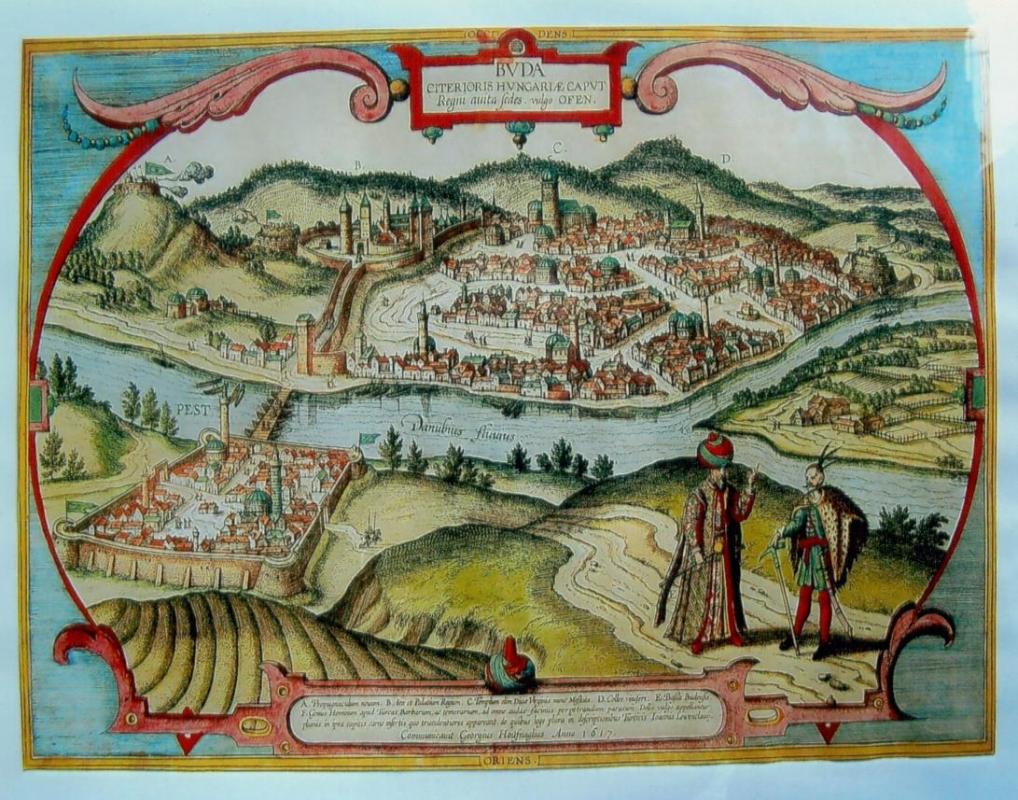
In the distance and across the Danube River is the City of Buda, with a hilltop fortress and the royal palace. The City of Pest, strongly fortified, is on the opposite bank in the lower-left corner. A pontoon bridge links the two cities.
The City of Buda was the seat of the local Pasha, standing in the foreground on the Pest side by his delija (“bodyguard”). The bodyguard wears feathers pierced through the skin of his scalp. Information courtesy of Altea Antique Maps, London; Photo by S. Hodgson, taken in a Hungarian restaurant on the Buda side.
The Pannonian Basin once held the huge and shallow Pannonian Sea. The sea covered parts of modern-day Hungary, Slovakia, Poland, Ukraine, Romania, Serbia, Croatia, Slovenia, and Austria. Three to four kilometers of sediments were deposited in the sea when it was at its largest, 5.3 to 2.6 million years ago in the Pliocene Epoch.
Most of the sandy sediments were deposited along the borders of the sea. Today these sediments hold the most significant thermal-water reservoirs in Hungary.(1)
The second major source of Hungarian thermal waters is the limestone strata under the Pannonian Sea, formed from the calcified remains of aquatic organisms. Limestone itself often has little innate porosity, but it is often dissolved by groundwater. Eventually, as happens in Hungary, enlarged fissures form, leading to the development of caves and well-defined underground water courses—typical karst features.(2)
About 80 percent of Hungarian thermal wells extract water from porous late Pannonian sandstone layers, and 20 percent from fragmented carbonate rock (karst) formations.(3)(4)
But how is all this water heated? The answer lies far beneath the Pannonian Basin. Here, a portion of the earth’s crust has been stretched so thinly that heat rising from below infiltrates the basin sediments.(5) “Because of this, the entire basin is characterized by an elevated heat flux (~100 mW/m2) compared to the surrounding regions.” (6)(7)( 8)
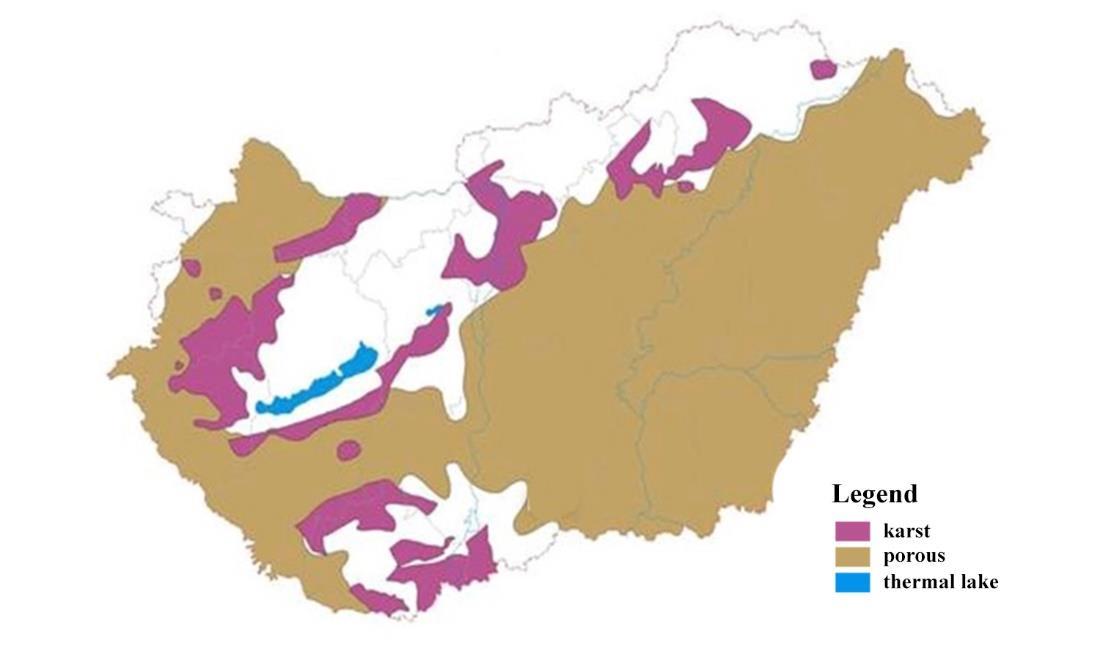
In summary, about two-thirds of the Hungarian national territory is underlain by vast thermal reservoirs in sandstone sediments and karst formations. Today much of the surface is covered by rolling plains; only one hill rises above 1015m.
The map at the beginning of the article illustrates the Pre-Cenezoic surface of Hungary. Besides the highly complicated geology, the relief at the surface is highly pronounced.
Through time, the Hungarian people have experienced changes under several rulers — including the Ottomans. But who was the first person ever to bathe in Hungarian thermal waters, and when? No one knows.
The oldest Hungarian archaeological site with evidence of (human?) presence, called Vértesszőlős, is found near a warm spring! Discovered in the 1960s, the site is near Tata (see Map 1). The site was occupied about five times between about 500,000 and 250,000 years ago. The first known traces are of Homo heidelbergensis. Whether these beings are ancestral to humans or not hasn’t been decided.

Thousands of centuries later, thermal bathing played a huge role in Roman life, long before the Romans ruled present-day Hungary. When they came, they brought along their bathing customs — as we know from the many elaborate bath houses built by the Romans at Aquincum — an important Roman city in northern Budapest on the western bank of the Danube.
The waters at Aquincum were cool, but the Romans used hotter waters whenever possible. In fact, the army used thermal waters to care for the horses. Whenever possible after rigorous days on the move, the soldiers led their horses into nearby pools of thermal water to relax and heal.
Dates differ for the years of Roman rule, which probably began between 35 to 9 BC and ended around 409 AD. The Hungarians came later, occupying the Pannonian Basin at the end of the ninth century. Some evidence exists of Hungarians using thermal baths during the Hungarian Kingdom period, between 1000 and 1526 AD —the year the Ottomans conquered Hungary. The Ottomans left Hungary in 1699. They often built Turkish baths near hot springs, and some have been enjoyed from that day to the present.
Over the entire Pannonian Basin, a thermal borehole is found almost every 10 km.(10) In 2019 in Hungary, over 900 active thermal water wells produced about 90 million m3 of thermal water, representing 1023.7 MWt or 10,701 TJ/y.(9) The waters were extracted mainly for bathing and wellness. (for more information, contact Prof. Dr. Rybach at: rybach@ig.erdw.ethz.ch10 or Prof. Dr. Tóth at: toth.aniko@uni-midkolv.hu).(9)
Historically, balneology is the country’s most important geothermal application, with over 250 wells yielding thermal and (sometimes) medicinal waters. These represent a total installed capacity of 249.5 MWt, with an annual use of about 3684 TJ/yr.(9)
Prof. Dr. Tóth wrote, “Most thermal wells in Hungary (40 percent of about 600 wells) are used as spas, their temperature values fall within the 30°-50°C range, and they extract water from the porous Miocene layers found 500-1500 m below the surface. Waters with temperatures above 60°C are recovered from the fissured karst reservoirs in the basement rock. Such wells are found, for example, in Zalakaros (about two hours southwest of Budapest), where the water temperature is 99°C, and in Gyula (see Map 1), where it is 91°C.”(1)
Knowing which minerals are dissolved in the thermal waters is important to many spa patrons who come for their health. The minerals dissolved in Hungarian thermal waters include simple carbonated water, earthy-limey water, alkaline water, chloride water and sodium chloride water, sulfurous water, iodine-bromine water, and radioactive water.(1) Many thermal baths offer bottled thermal waters for sale.

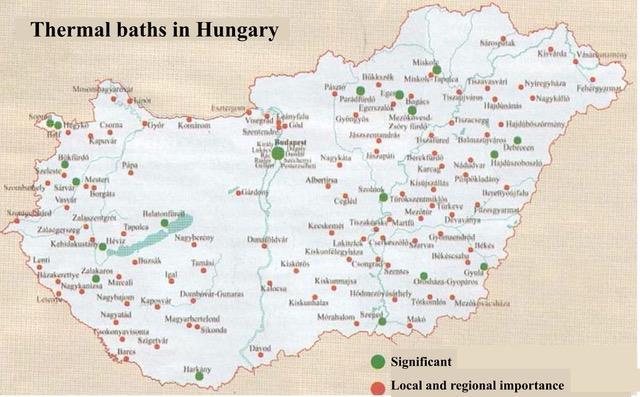
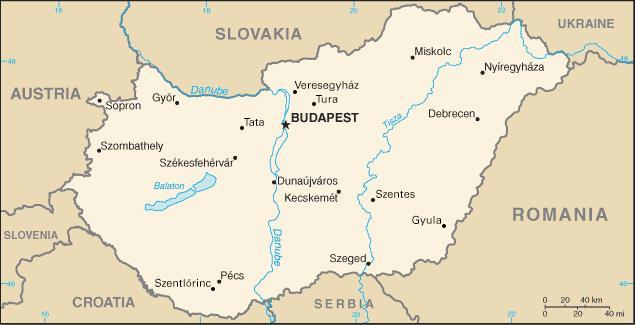
The Budapest area, famous for its thermal springs and spas and outstanding thermal water resources, is one of the main discharge regions of the largest, karstified, carbonate- aquifer system in Hungary. Here, from the second half of the 19th century on, the use of natural springs has been substituted progressively by deep wells. This is because thermal water — from the region where carbonate formations are confined by low-permeability layers of any regional flow system — can be used for geothermal purposes by deep wells.(8)
The springs and wells that supply the famous baths of Budapest discharge mainly from a regional Triassic carbonate rock aquifer system (with karst features). The springs mostly have been replaced by wells. Only a few natural springs are known today; most drain unused into the Danube.(11)
Budapest has 11 major thermal baths, many using thermal water from shallow and deep wells. Springs arise along the Danube fault trending north-south on the western bank of the Danube River — on the Buda side. Calcified caves are found close to the discharge areas of the springs.
The four major baths on the Buda side, from south to north, are St. Gellért, Rudas, Király, and St. Lukács.12 All were built in the Danube fault zone and use thermal waters from shallow wells connected to the fault zone. Water temperatures in the fault zone are hottest to the south and cooler the further north you go. Thus, the southernmost thermal bath of the group, St. Gellért Thermal Baths and Swimming Pool, has the hottest thermal waters.
In 1918, St. Gellért Thermal Baths and Swimming Pool opened its doors. The famous building is beautifully decorated in the Sucessionist, Art Nouveau style — including original, pyro-granitic ornamentation from the famous Zsolnay factory. In the Middle Ages, a hospital stood here.
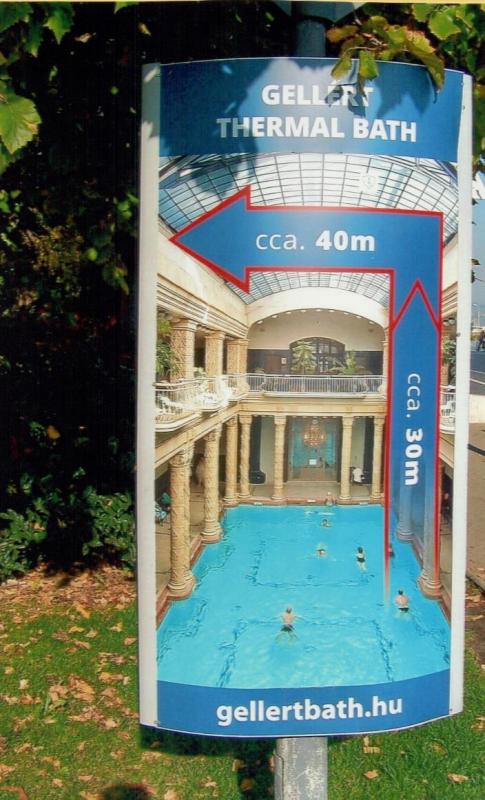
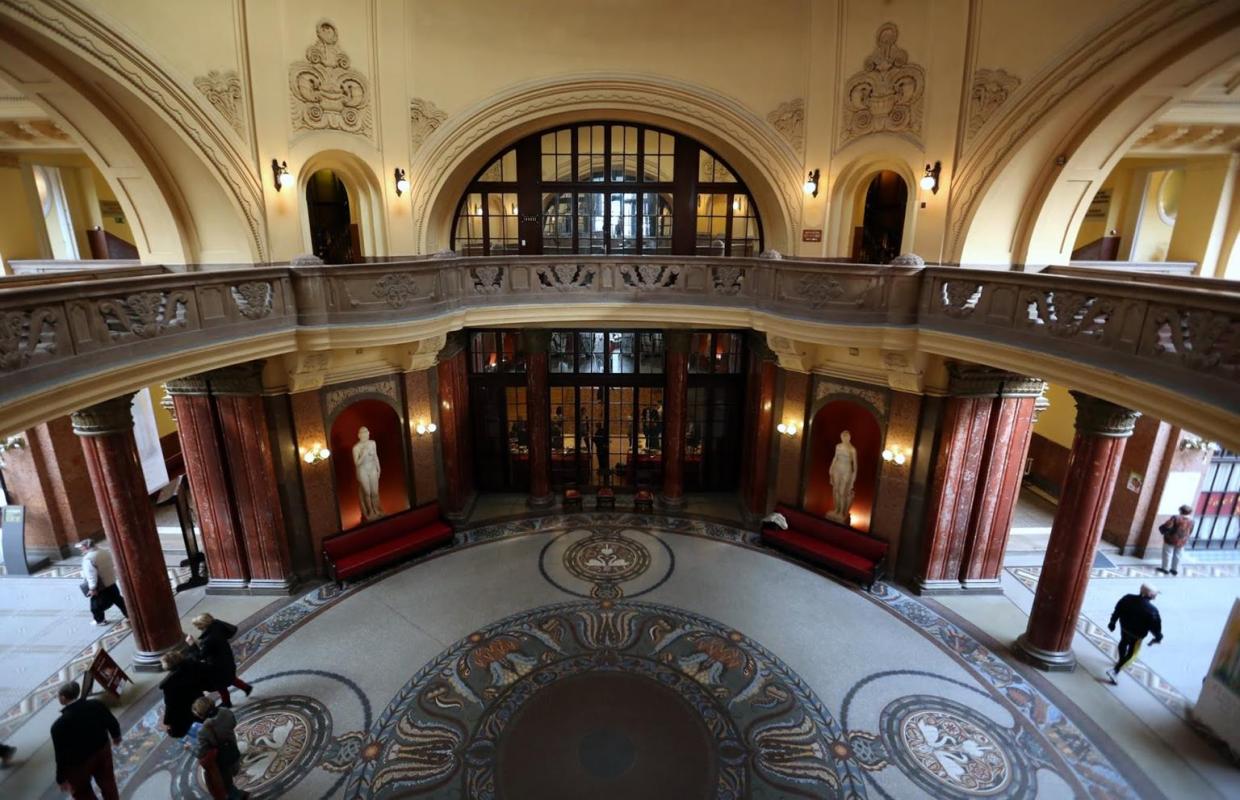

Eszter Pulay, an Environmental Scientist, led me on a tour through St. Gellért’s rooms and pools. When we finished, we walked north through a tunnel to the spa next door, the Rudas Thermal Baths and Swimming Pool. The tunnel includes observation wells and is used for finding new wells and sources of thermal waters.
Presently, three wells are being used by the St. Gellért Bath and one or two by the Rudas Baths. “The thermal wells, drilled into karst features, are older than the bath buildings themselves,” said Andrea Ligeti, our guide at the Rudas Baths. “The thermal waters were used before construction began.” (For more information, contact Ms. Pulay at: pulay.eszter@spabudapest.hu).
Mustafa Pasha built the Rudas Baths during the Ottoman occupation of Hungary in the 16th century. The building has been expanded through the years, and the last renovation ended in 2005. All this time, the original, historical area has remained untouched— including the dome (10 meters in diameter), supported by eight pillars around a lovely, octagonal pool. A drawing hangs nearby of Ottoman bathers using the pool.
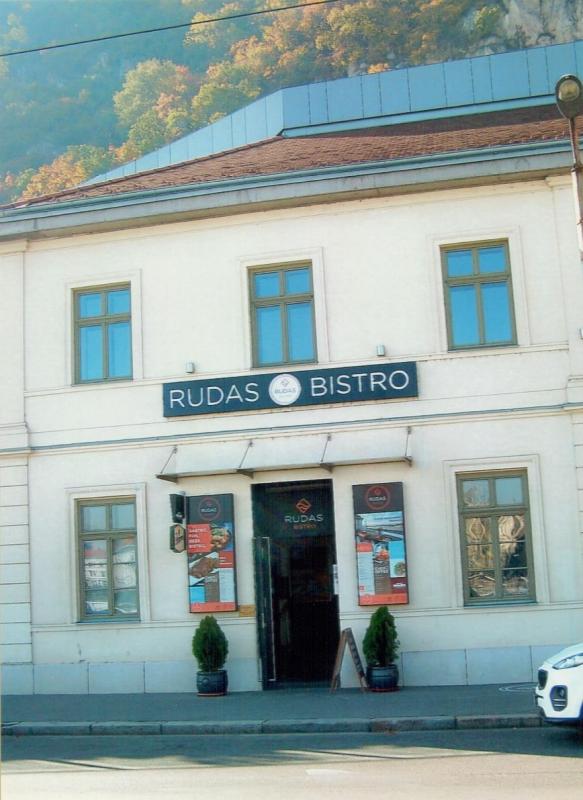
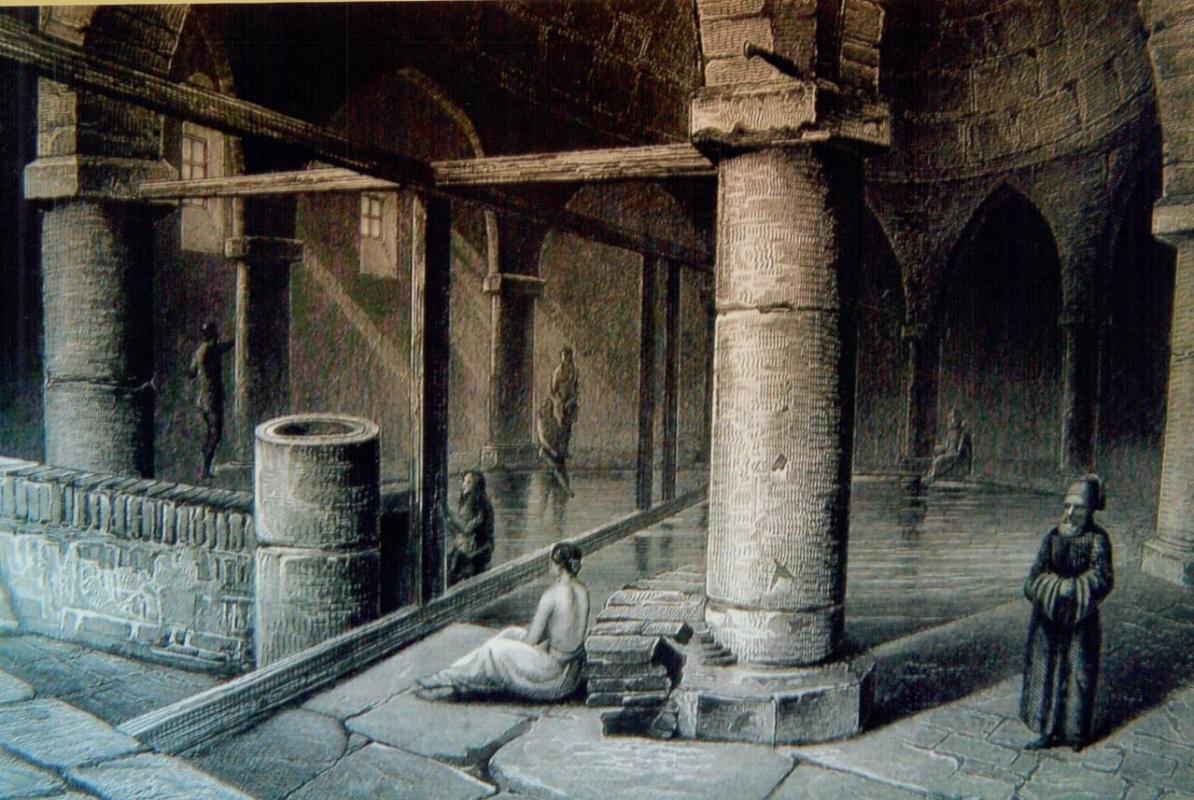


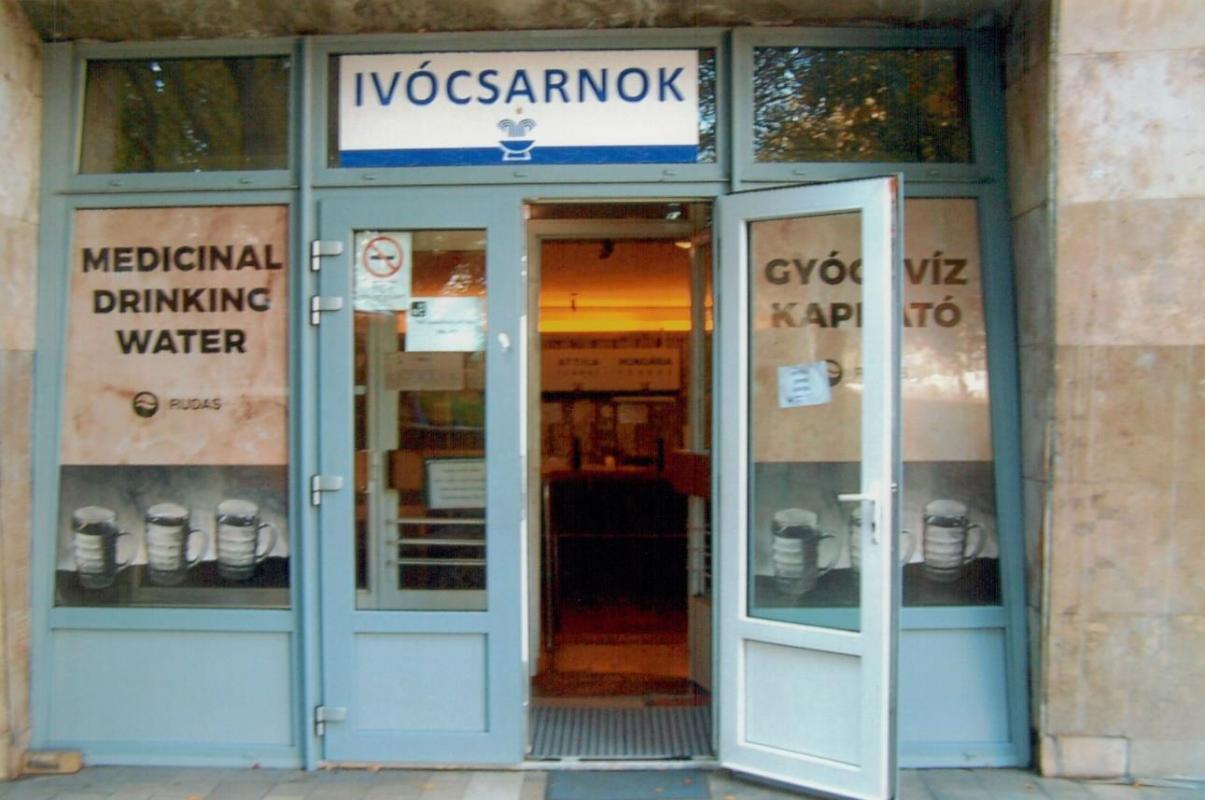
Eszter Pulay works at the Király Thermal Baths, located just north of the Rudas Baths. Construction was begun here in 1565 by Arslan, the Turkish Pasha of Buda, and was completed by his successor, Sokoli Mustafa. The Király never has had its own supply of thermal waters. The Ottomans built Király too far away from the thermal wells for this — on purpose. They made sure the thermal baths would be available to them inside the fortress walls during sieges.
At first, redwood pipes were used to channel the waters to Király from what is now called the St. Lukács Thermal Baths and Swimming Pools (just to the north). Today, Király still uses the same thermal waters drawn from the same St. Lukács’ wells.(12)
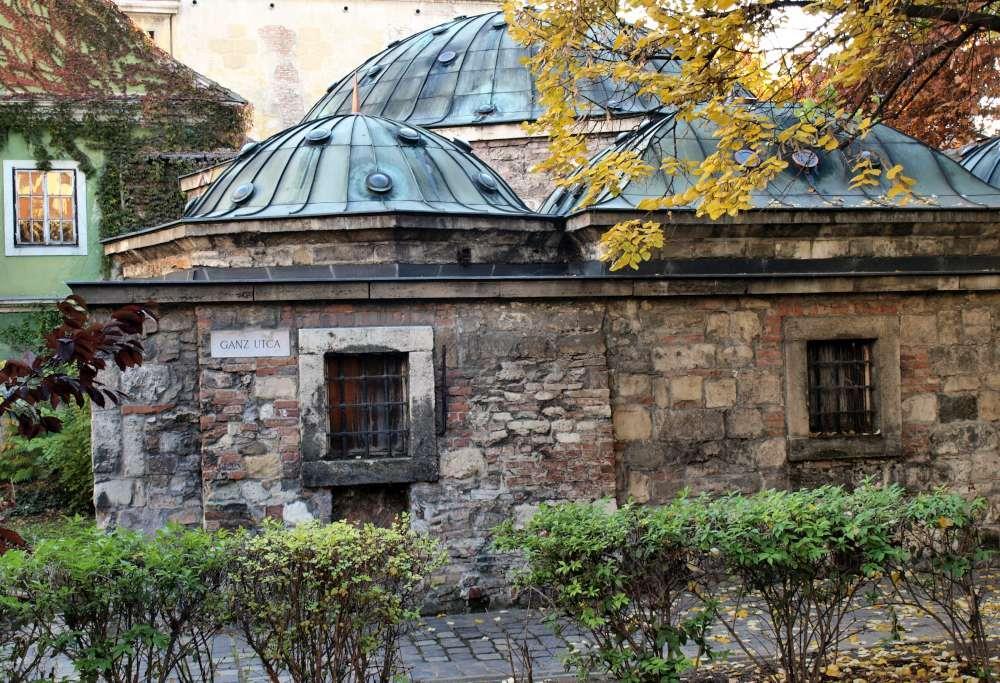
St. Lukács Thermal Baths and Swimming Pools has a recorded history dating back to the 12th century, when the St. John Knights came to cure the sick. Knights from the orders of Rhodes and Malta followed and built monastery baths.
In the Middle Ages, St. Lukács Baths was the favorite of the Turkish Grand Vizier, Pasha Mustafa. When the City of Buda was recaptured from the Ottomans in 1686, St. Lukács became property of the Treasury. In 1884 Fülöp Palotay purchased the property from the Treasury and began what would become 121 years of remodeling.

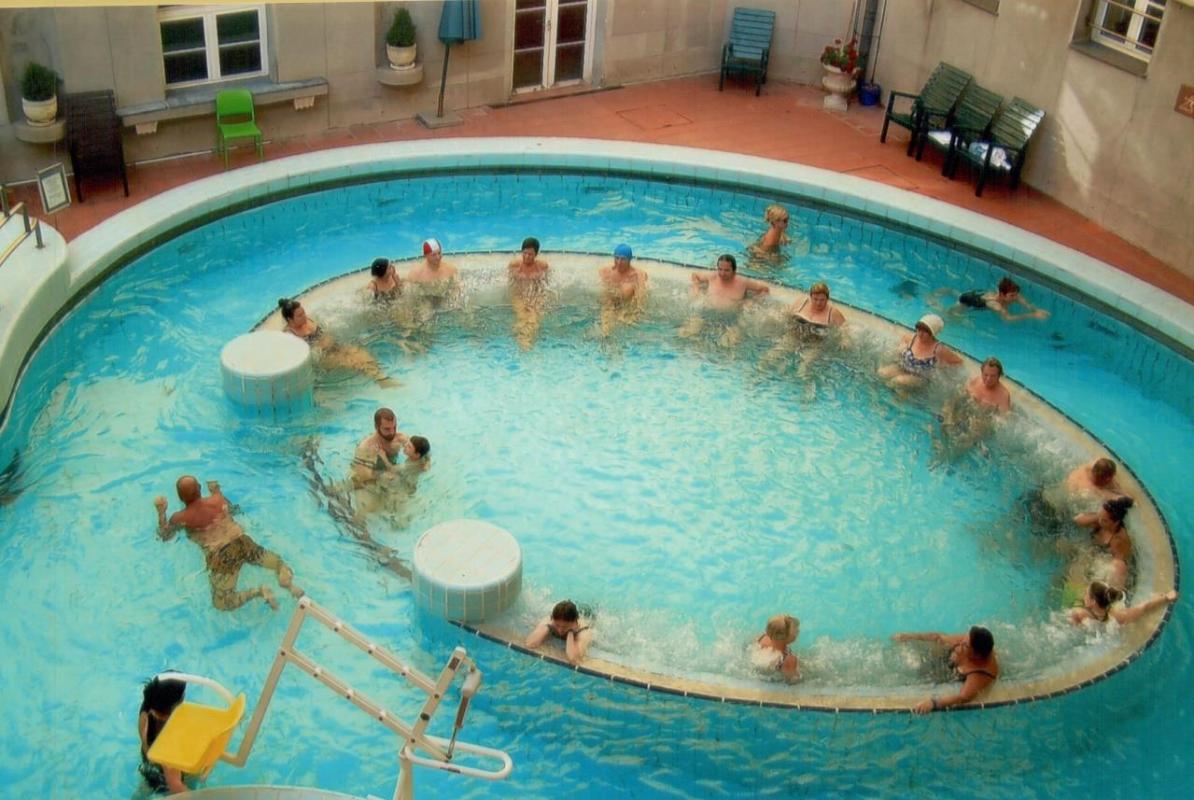
“On the Buda side of the Danube River, the carbonate formations with karst features are close to the surface, (as the four thermal baths illustrate),” said Prof. Dr. Mádl-Szőnyi.(8) “On the Pest side, the carbonates form deeper strata and a porous cap rock traps the rising heat in the carbonate. This is why the waters on the Pest side are hotter than on the Buda side.(13) On the Pest side, waters for the thermal baths come from deep wells, not hot springs (For more information, contact Prof. Dr. Mádl-Szőnyi at: szjudit@ludens.elte.hu).
The Széchenyi Thermal Baths and Swimming Pools is the best known thermal bath on the Pest side. Széchenyi extracts 74°C and 77°C thermal waters from two wells drilled 1650 m deep into carbonate rocks in the fault zone. Drillers at the Paskál well entered a 300 meter-long vertical shaft, an amazing karst thermal feature.
Széchenyi’s history began in the 1870s when hot spring wells were drilled near a small bathing structure built at Hero’s Square, near the City Park in Budapest. As patronage grew, the bathing structure was rebuilt on an island in the City Park. Finally, in 1909, construction began on what would be the massive, beautiful building admired in the City Park today.
Some recycled thermal waters from Széchenyi are piped to an artificial lake in the City Park. Others help heat two thirds of the city zoo, lowering the gas bill by one half. Heated areas include the animal enclosures, the pools for tropical animals, and the palm house.(1)
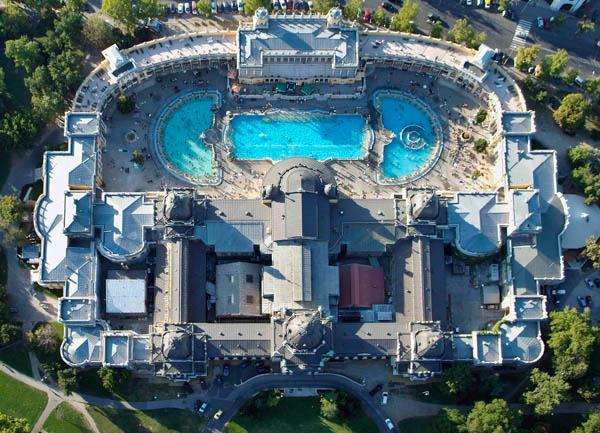
Thermal waters heat many structures in Hungary. In fact, heating greenhouses with thermal waters is the second oldest geothermal application in the country, and very significant. In Hungary, 493 wells produce 11 million m3 of thermal waters used to heat over 70 hectares of greenhouses and 260 hectares of ground-heated polytunnels (tented structures). In the 1960s, Hungary’s oldest and most significant greenhouse network began using thermal waters for heating greenhouses and polytunnels at Árpád Agrár Zrt., in the city of Szentes (see Map 1).(1)
After making a few calls, Gábor Szita spoke with Mr. Sánder Mártin, 91-year-old man who once worked as chief accountant for Árpád — or a prior iteration of the company. Mr. Mártin said a small, state-owned, horticultural research institute in Szentes had used geothermally heated greenhouses a few years before Árpád came. Once Árpád constructed its own greenhouses, it took the lead.
One afternoon Gábor and I drove to Veresegyház, a city of about 20,000 people (see Map 1). Here, thermal waters heat structures built in the city center and on the outskirts. We had appointments to visit a greenhouse and several other buildings that were heated geothermally.
Outside of Veresegyház proper, we passed two large factories run by General Electric — GE Aviation and GE Power — built on eight hectares of land. The plant is heated by a huge geothermal system: three production wells and one injection well, all city-owned. The water temperatures are between 66°C and 72°C. The city has built a double pipeline network, 18 km long, to the site.
We arrived at the greenhouses of Veresi Paradicsom Ltd. on time. This new, innovative, and growing agricultural company was built in Veresegyház at Gábor’s suggestion. The company raises tomatoes in 63,000 m2 of greenhouses heated by geothermal waters piped in from Veresegyház wells. The zero-emissions heating system doesn’t damage the environment; all the waters are cooled, cleaned, and reused.
The company has installed artificial, LED-based, supplementary lighting in the greenhouses — the first in Hungary and maybe the world to do so, according to Tungsram.com. The lighting makes year-round plant growth and sales possible, said Zsolt Márkus, owner and managing director of Veresi.
Company innovations include the tomatoes themselves. Zsolt says Veresi is the first to ever measure the sugar content of tomatoes.

Ripened tomatoes are harvested daily by workers who change their gloves at the end of each row to avoid harming the next one. A bunch of tomatoes is never picked until even the lowest tomato is the right color. Veresi first sold the tomatoes abroad, but today sells about 95 percent of them in Hungary. The company recently received the Innovation Technology Ministerium Award for 2020.
Veresi tomatoes are so well regarded that the chef of Onyx, a two-star restaurant in Budapest, comes to the greenhouses to pick his own. Walking in Budapest the next day, I passed by Onyx. First on the menu — a tomato appetizer (for more information, contact Dr. Márkus at: zsolt.markus@garden-invest.com).
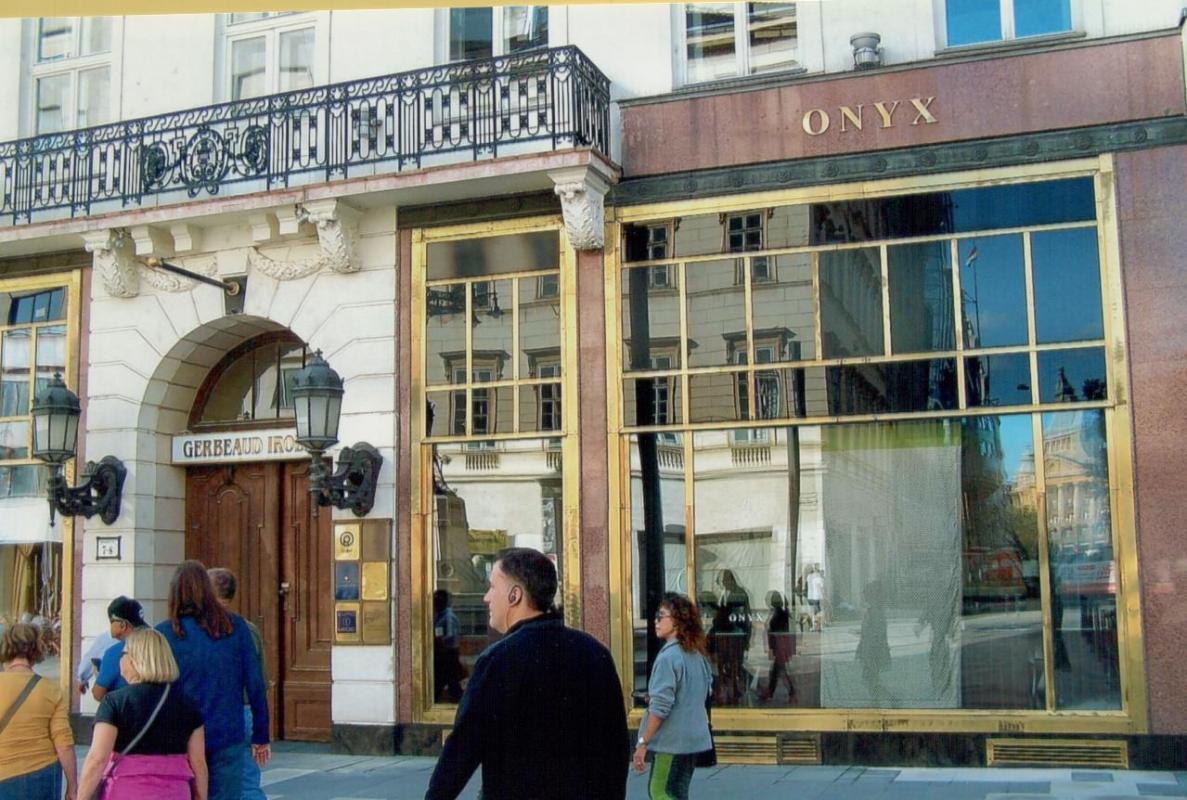
Leaving Veresi with small boxes of cherry tomatoes, we drove to the city center and parked at the Veresegyház hospital, which was geothermally heated. Our appointment was with the city mayor, Mr. Bela Pásztor, who was elected to the office in 1965. On sitting down, I asked Mr. Pásztor for the story of geothermal development in his city. He told us proudly, “Today 81 percent of consumers are connected to our geothermal system.”
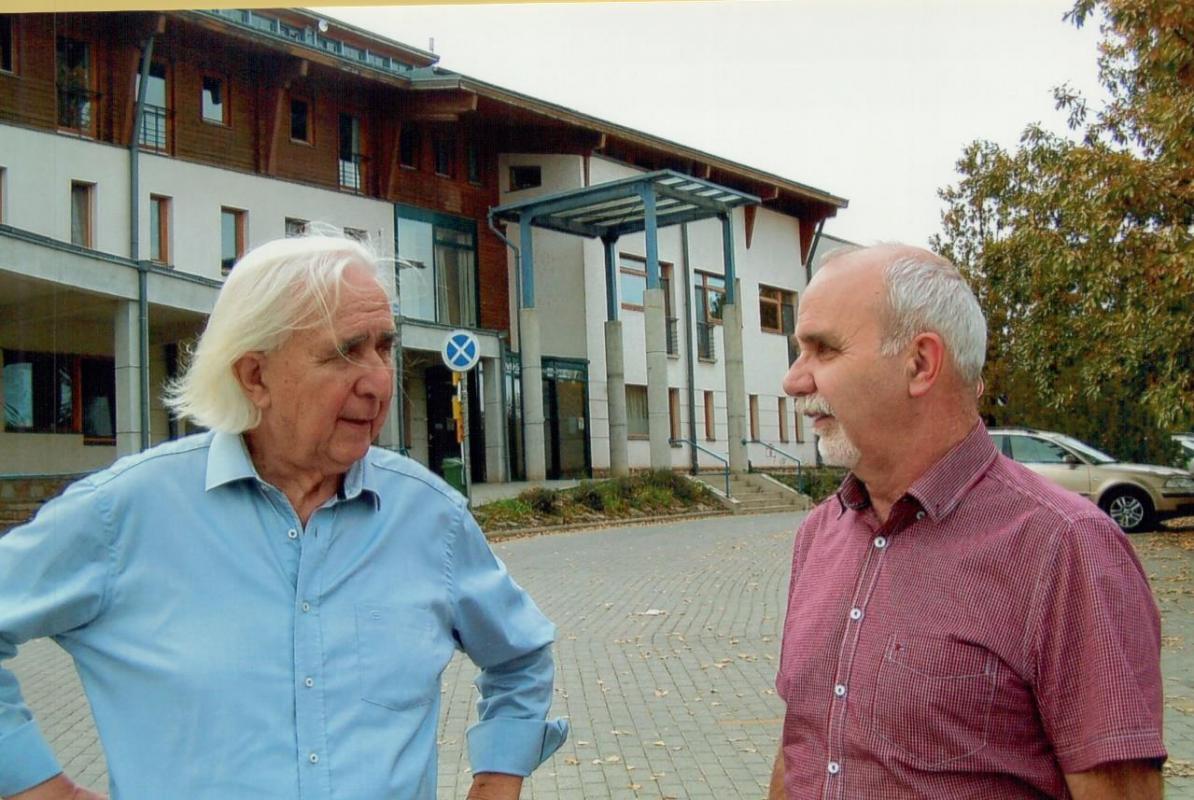
He recalled when the first geothermal well was drilled in 1987 to a depth of 1500 m, with temperatures reaching 65°C. The well was tested for over a year to ensure the production was stable. Gábor told me the well’s success even surprised the hydrologist — for drilling is a risky undertaking. A third production well was drilled in 2015, and its production exceeds that of Well 1. Well 3, drilled 1700 m deep with temperatures of 71°C to 72°C, has minor scaling. About 1200 to 1700 m is the average drilling depth for wells in this part of Hungary, but wells drilled in the Triassic limestone are known to reach 2000 and 2800 m.

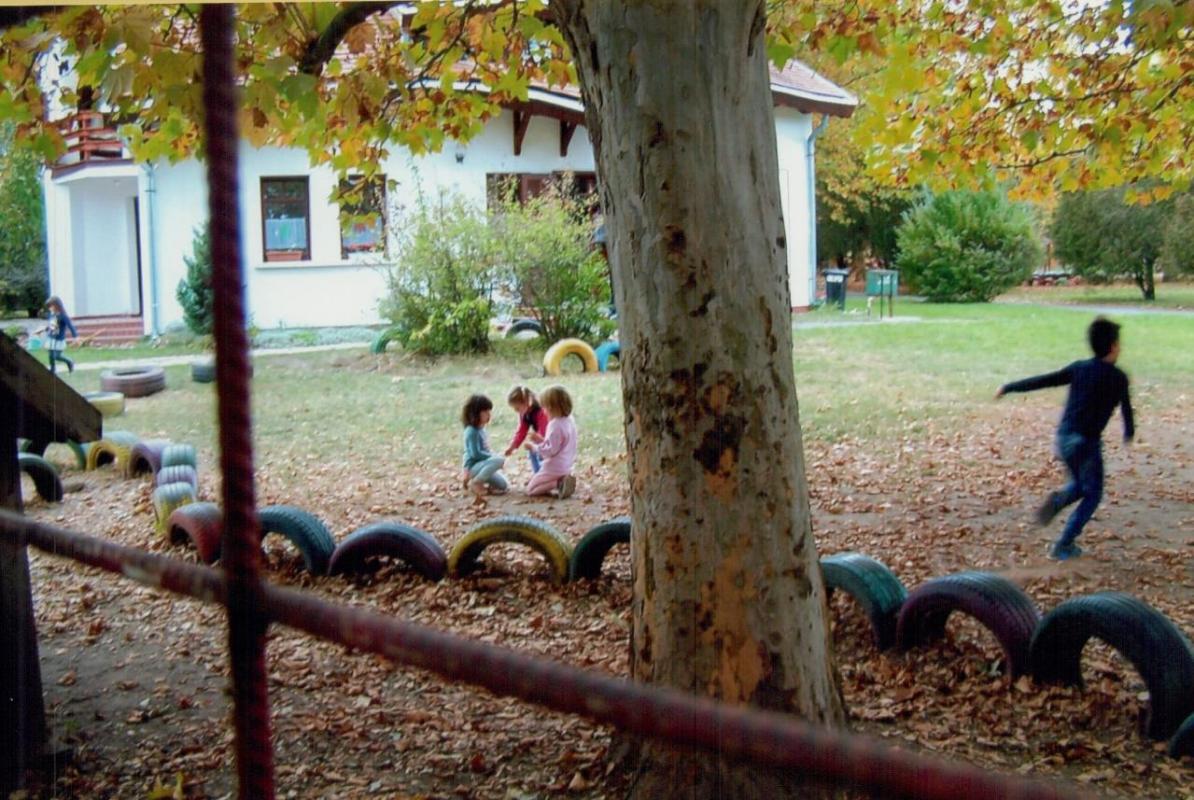
The mayor said the city’s original goal was to build a thermal bath with geothermal waters, but there wasn’t enough money to pay for the building. Then they heard geothermal waters can heat buildings. A geothermal pipeline network was begun in 1993 for transporting thermal waters to the elementary school. Four years later, the piping network was connected to the music school and the culture house.
“Needing more geothermal waters, we drilled new wells,” he said. “All are successful. Currently we are designing a new production well and a new injection well to supply heat to blocks of buildings, each with 10 to 12 small apartments. The city will own some of the apartments; the others will be privately owned. Today we have about 7,000 detached houses and apartments in the city. About 350 of the apartments are heated solely by geothermal waters.”
In 2008, when Hungarian housing prices dropped, Porció Ltd. (Gábor’s company) built 180 to 190 flats — geothermally heated — in Veresegyház. They were finished around 2014 and all were sold. Their values may have risen over 50 percent in the last 10 years.
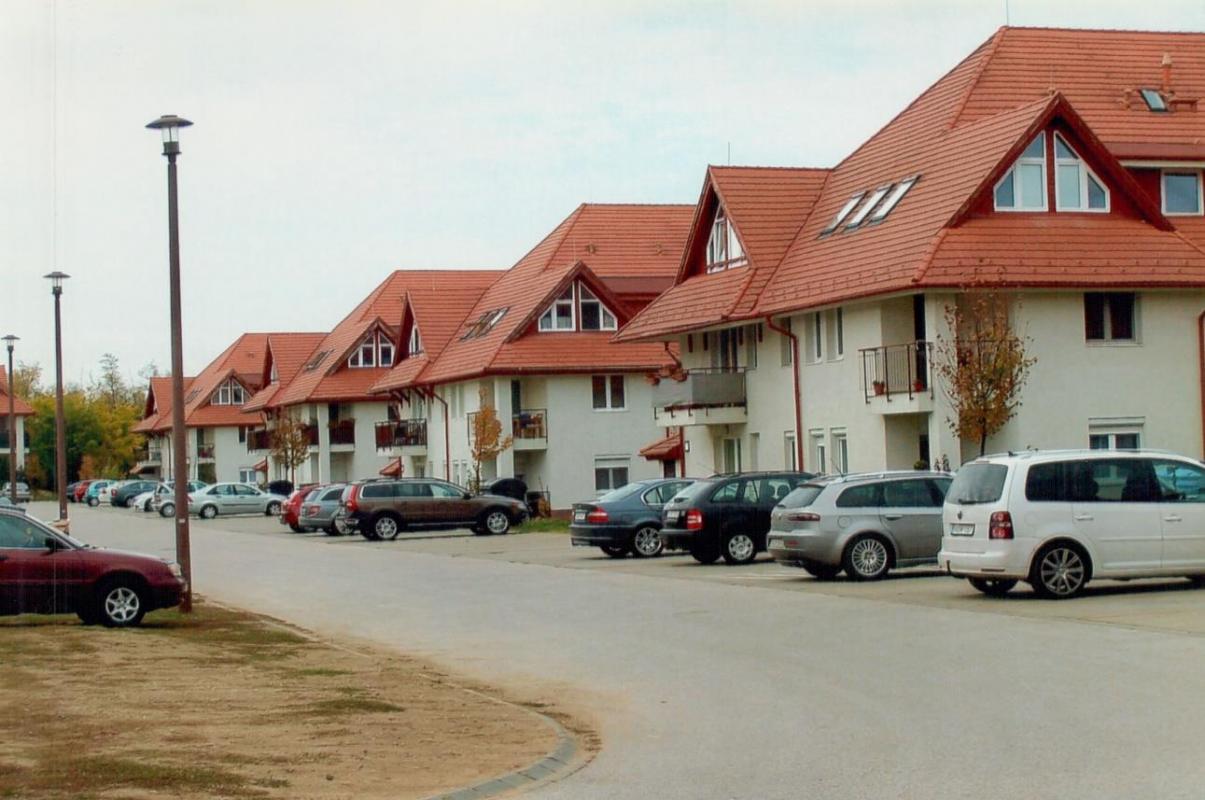
Talking about the city’s abundant geothermal waters, the mayor said, “We just wanted to use them. Every year our thermal waters replace about 3.5 million cubic meters of natural gas.” When I asked about the risks involved in developing geothermal resources, Mr. Pásztor said, “We have a chance only if we risk.”
Thanking the mayor for his help, we left to see more geothermal projects in Veresegyház. The geothermally heated buildings include the town hall, the post office, the football stadium, and an open-air bath. The municipality determines the price of geothermal energy in Veresegyház, not the state. The local energy source benefits the local community.
Porció Ltd. is a Hungarian company working on geothermal projects. Owned by Gábor Szita, Porció’s business model is to build a geothermal project, operate it successfully, and transfer (sell) it, often to a municipality. If the project doesn’t perform well, a prospective buyer is free to walk away (For more information, contact Dr. Szita at: szitag@mgte.hu).
Another Hungarian geothermal company is NEG Zrt., the National Energy Management Company, whose CEO is István Donázy. NEG Zrt. is controlled by the Hungarian National Asset Management Company, Ltd.
Mr. Donázy said the company’s main goal is to promote energy-conscious operation for its clients, reducing their energy costs. NEG seeks to stimulate, catalyze, and assist legislators with first-hand information, creating a regulatory environment advancing these goals. The company helps the owners of industrial and agricultural infrastructures modernize their energy requirements, increase renewable-energy production, and renovate state and municipal energy use.
The Municipality of Budapest owns the city tram system, where about 600 trams operate every day. The transport company repairs the trams inside a very large building. A current NEG project is to heat the building with geothermal energy instead of natural gas.
To this end, NEG has drilled a geothermal production well and injection well in Budapest. The production well penetrated a hot-water aquifer about 1300 m deep, with waters of about 72°C flowing over 1300 ltr a minute — more than expected. The injection well penetrated a huge karst cavern at a depth of about 1250 m. The thermal waters will be used to heat the tram repair building. These thermal wells are the first ever drilled in Budapest solely for a heating project.
The project began four years ago, and the implementation phase has been underway for two. Originally 6 million kWh of electricity was needed to heat and operate the building each year. The new geothermal heating system will use only 300,000 kWh of electricity every year for operating the pumps and other elements. The geothermal heating system consumes no natural gas and emits no carbon dioxide. (for more information, contact Dr. Donázy at: donazy.istvan@negzrt.hu).
Another Hungarian company, PannErgy, developed Hungary’s largest district heating project in Miskolc (see Map 1). Next the company built the large, direct-use project in Györ (see Map 1). PannErgy also operates two smaller geothermal systems in Szentlőrinc (see Map 1), and Berekfürdő (about two and a half hours east of Budapest). The company recently reported a 20 percent increase in geothermal heat sales for 2019.
Hungary has one geothermal power plant, located in Tura (see Map 1). The electrical production is 2.3 MWe gross and 1.3 MWe net, according to the Mining and Geological Survey of Hungary. This is the first geothermal power plant ever built in the Pannonian Basin.
Gábor Szita believes the future of geothermal in Hungary depends on whether the government policy supports geothermal projects, as did the former government 10 years ago when geothermal development flourished. Then monies were available, the plants ran at high efficiency, and all the equipment worked. The government only has to re- implement the plan.
Moving toward this goal is the Division of Business Development and Communication, in the Mining and Geological Survey of Hungary. The division is headed by Dr. Annamária Nádor, who kindly sent the following information about a new plan for geothermal risk insurance.
She writes, “Hungary is well advanced in introducing a new geothermal risk insurance scheme in 2020. This is well established at the policy level: both the new National Energy Strategy and the National Energy and Climate Plan (both issued in January 2020) explicitly mention the Geothermal Guarantee Fund. The first step is introducing the pilot projects financed by the Swiss-Hungary Cooperation Program with about 14 million CHF of starting capital.
“Experiences from these projects will be used to elaborate further the details of the risk insurance scheme for the future. According to the Hungarian proposal, geothermal projects that apply full injection will be eligible, irrespective of the depth of the research, the petrological nature of the reservoir, and the technology of the exploration and production activities. The planned schemes support project development by tenders, in a phased, ex-post-financed way, by investment risk mitigation, the partial sharing of investment risk, and the introduction of collateral for failure coverage.
“The legal acts about the introduction of this Guarantee Fund are elaborated and presently (in March 2020) under Parliamentary discussion. The concept papers and technical background materials supporting this initiative benefited a great deal from the GeoRISK project and its studies, especially on risk assessment methodologies and the overview and in-depth analyses of the already existing schemes all over Europe.” (For more information, contact Dr. Nádor at: nador.annamaria@mbfsz.gov.hu)
The Hungarian Ministry for Innovation and Technology, established in 2018, coordinates the entire energy sector, including geothermal. In 2018, the ministry established the Energy Innovation Council to offer expert input for a review of the Hungarian Energy Strategy. The council includes several thematic sub-groups. Geothermal energy plays an important role in the sub-group dedicated to renewables.
I interviewed Dr. Péter Kaderják, Minister of State for Energy Affairs and Climate Policy, within the Ministry for Innovation and Technology. He said energy and climate policies contribute over 70 percent of the climate problems. To manage climate issues means using local energy resources and energy efficiency. President Orbán, he said, is very much aware of the climate issues and in favor of the policies alleviating them. Dr. Kaderják’s office offers regulatory and financial help to developers.
The Hungarian Government issues the right to drill geothermal wells and chooses which areas to open for exploration. Those with the highest bids for the licenses enter the market. In 2019, Aspect-TDE Geotherm Kft won the Gádoros area tender for geothermal energy exploration, production, and prospecting.
“At a policy level, the licensing system is stable,” Dr. Kaderják said. “Concessions are for 35 years. To receive a license, a person must demonstrate financial and technical capability. We are far from our full potential in promoting geothermal development, but we are trying to get ahead.” (for more information, contact Dr. Kaderják at: peter.kaderjak@itm.gov.hu)
I want to thank the many kind and generous people who helped me. They include Gábor Szita for the invitation and appointments, the eye-opening trip to Veresegyház, and reviewing the manuscript; Ladislaw Rybach for geological insights and reviewing the manuscript; and Judit Mádl-Szőnyi; Anikó Nóra Tóth; Zsuzsanna Vitai; Kata Takács- Szabó; Eszter Pulay; Andrea Ligeti; István Donázy; Zsolt Márkus; Bela Pásztor; Annamária Nádor; and Péter Kaderjék.
- Tóth, A. N., “The Geothermal Atlas of Hungary,” Hungarian Energy and Public Utility Regulatory Authority (2016); 12-13; 33.
- Duff, P. McL. D., Holmes’ Principles of Physical Geology, Fourth Edition (1993), Chapman & Hall; 387.
- Liebe, P. , Magyarország Termálvízkészletei (1993), Római Könyvkiadó, Budapest.
- Fancsik, T., A. Nádor, Geotermikus Feladatok a Magyar Földtani és Geofizikai Intézetben (2012), Kutatás és Innováció a Magyar Geotermiában, Konvferencia, Budapest.
- Vitai Z. M., Source of Geothermal Energy in Hungary (2019), PowerPoint presentation.
- Lenkey, L., P. Dővényi, F. Horváth, S. Cloething, Geothermics of the Pannonian Basin and Its Bearing on the Neotectonics EGU Stephan Mueller Special Publication Series, (2002), 3: 29-40.
- Horváth, F., B. Musitz, A. Balázs, A. Végh, A. Uhrin, A. Nádor, B. Koroknai, N. Pap, T. Tóth, G. Wórum, Evolution of the Pannonian Basin and Its Geothermal Resources, Geothermics, (2002), 53: 29-40.
- Mádl-Szőnyi, J., M. Virág, F. Zsemle, Potential Maps for the Hydrogeologic Prerequisites of the Installation of Deep Geothermal Doublets and Groundwater Source Heat Pump Systems in Budapest, Hungary, Central European Geology, (2015) 58: 1-2: 114-128.
- Tóth, A. N., Country Update for Hungary (2020), Proceedings World Geothermal Congress. (To read, wgc2020.us13.list-manage.com , and fill in the author’s name and the title).
- Rybach, L., Geothermal Potential of Sedimentary Basins, Especially of the Swiss Molasse Basin (2019), Hungarian Geological Society, Vol. 149, 4, pp. 401-414.
- Eröss, A., Zsemle, F., Pulay, E., Heat Potential Evaluation of Effluent and Used Thermal Waters in Budapest, Hungary, Central European Geology (2015), 58: 1-2: 62- 71.
- Mupa.hu, Budapest the City of Spas. Accessed June 17, 2020.
- Mádl-Szőnyi, J., personal communication (2019).
